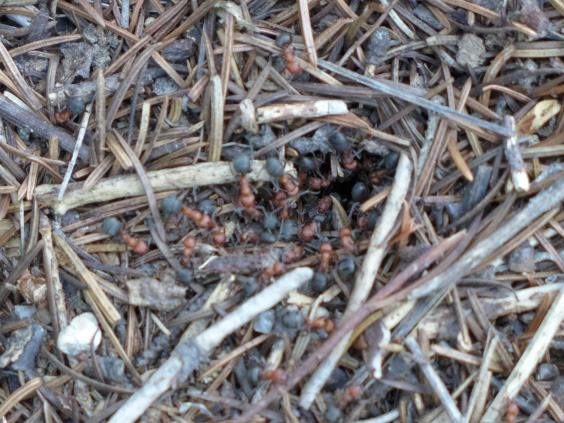A banana for scale isn’t going to cut it for this large, mounded, thatch nest …luckily there is a person. Without seeing the ants in more detail, our best guess for this species is Formica ravida. These ants are active from March through October, with mating flights from late June through early August. This genus of ants has been described as “predatory with a sweet tooth.” Workers hunt or scavenge all manner of arthropods and less often earthworms. They satisfy their sugar cravings with honeydew (aphids’ sugary waste product) and extrafloral nectar (nectar-secreting glands located outside of flowers), often foraging high in trees. Best not to mess with the nest, as workers will swarm, thrusting their abdomens forward to spray the intruder with a dose of formic acid.
Why construct and maintain such a large nest? The mound’s exposure to sunlight and the thatch insulation provide climate control (both temperature and humidity). Workers constantly repair the thatch to keep it in tip-top shape and gnaw the plants surrounding it to minimize shade.
Photos by: Peter Lesica around 6/28/21 near Lacy Creek in the West Pioneer Mountains, MT
